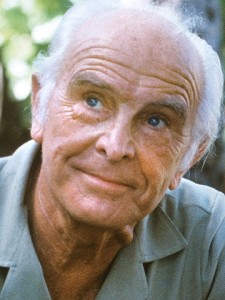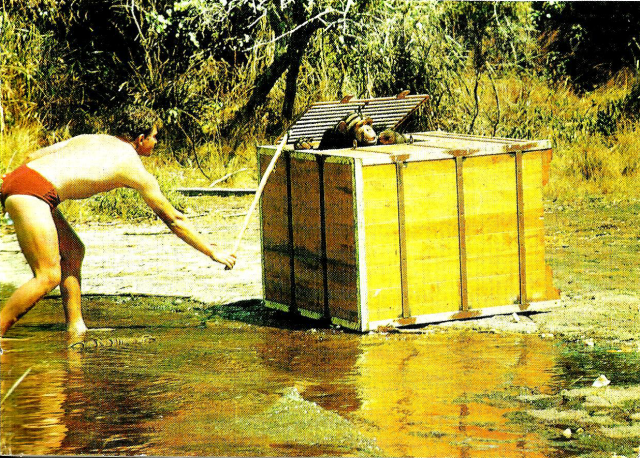Rubondo: How the Chimpanzees Arrived on Rubondo
The chimpanzees are certainly the most famous residents of Rubondo and many of our guests ask how they arrived on the island in the first place.
Rubondo Island: Chimp Heaven
Establishing Rubondo Island as a haven for endangered species was the passion project of Professor Bernhard Grzimek of the Frankfurt Zoological Society. Over a four year period (1966-1969) he released 16 chimpanzees rescued from European zoos in four cohorts onto the island. The following extracts from his book ‘Among Animals of Africa’ explain that this was by no means an easy task!
“We chose a fairly level spot on the shores of Rubondo to unload the crates containing the chimpanzees. Although they had to be manhandled ashore, this gave us a chance to take refuge in the water after opening them. I must have caught bilharzia on this occasion. Some of the adult zoo chimpanzees were anything but harmless. One of them had already put a keeper in hospital. Another particularly spiteful male caused considerable mischief on Rubondo 18 months later. Sinclair Dunnet is here(photo above) seen opening a travelling crate with great care. He could retreat into the water at a moment’s notice because anthropoid apes are non-swimmers”.
The animals had no rehabilitation or pre-release training but after one year on Rubondo they were able to find and eat wild foods and construct nests for sleeping.The island is very suitable for stocking with rare species of wildlife because no large predators are yet to be found there.”
This was the first ever attempt to rehabilitate captive chimpanzees. They have now reverted to an unhabituated state characteristic of wild chimpanzees and remain secretive. From 16 founders the population has now grown to around 35 individuals.
In addition to chimpanzees, seven other species were introduced to the island: Roan antelope and rhinoceros, Suni antelope, elephant, giraffe and black-and-white Colobus monkeys.
Grzimek explains;
“135 square mile of island at the southern end of mighty Lake Victoria have been cleared of human inhabitants and placed under a strict conservation order. In 1966, apart from gueraza monkeys and roan antelopes, we stocked the island with 10 chimpanzees from European zoos. They became well acclimatized and have since produced young’’.
Today we still have much to learn about the chimps, and other inhabitants of the island, and we fell honoured to be part of ensuring Grzimek’s vision of Rubondo as a safe haven is continued.
All photos used © Professor Bernhard Grzimek, from the book ‘Among Animals of Africa’
 About Berhard Grzimek:
About Berhard Grzimek:
Grzimek became director of the Frankfurt Zoological Garden on 1 May 1945. The zoo then in ruins and all animals killed, except 20, he prevented the permanent closure of the Frankfurt Zoo and the relocation of the “Center Zoo” to the suburbs, which he made into one of the largest zoological gardens in Germany. The Zoo reopened on 1 July 1945, after all bomb craters were filled and buildings temporarily restored. With festivals, dances and actors, Grzimek lured the Frankfurt population into the zoo and received the assent of the Provisional Government and the U.S. military to continue the Frankfurt Zoo.
Grzimek led the Frankfurt Zoo for 29 years, until his retirement on 30 April 1974.
At the same time he served as president of the Frankfurt Zoological Society for over forty years. The society – organized on similar principles as its London and New York counterparts – runs a number of wildlife conservation projects both in Germany and overseas; most well-known is its ongoing work in the Serengeti ecosystem in Tanzania,East Africa.
If you would like to find out more about the beautiful Rubondo Island please visit the Rubondo Island Camp website here.
The post Rubondo: How the Chimpanzees Arrived on Rubondo appeared first on Asilia Africa.








